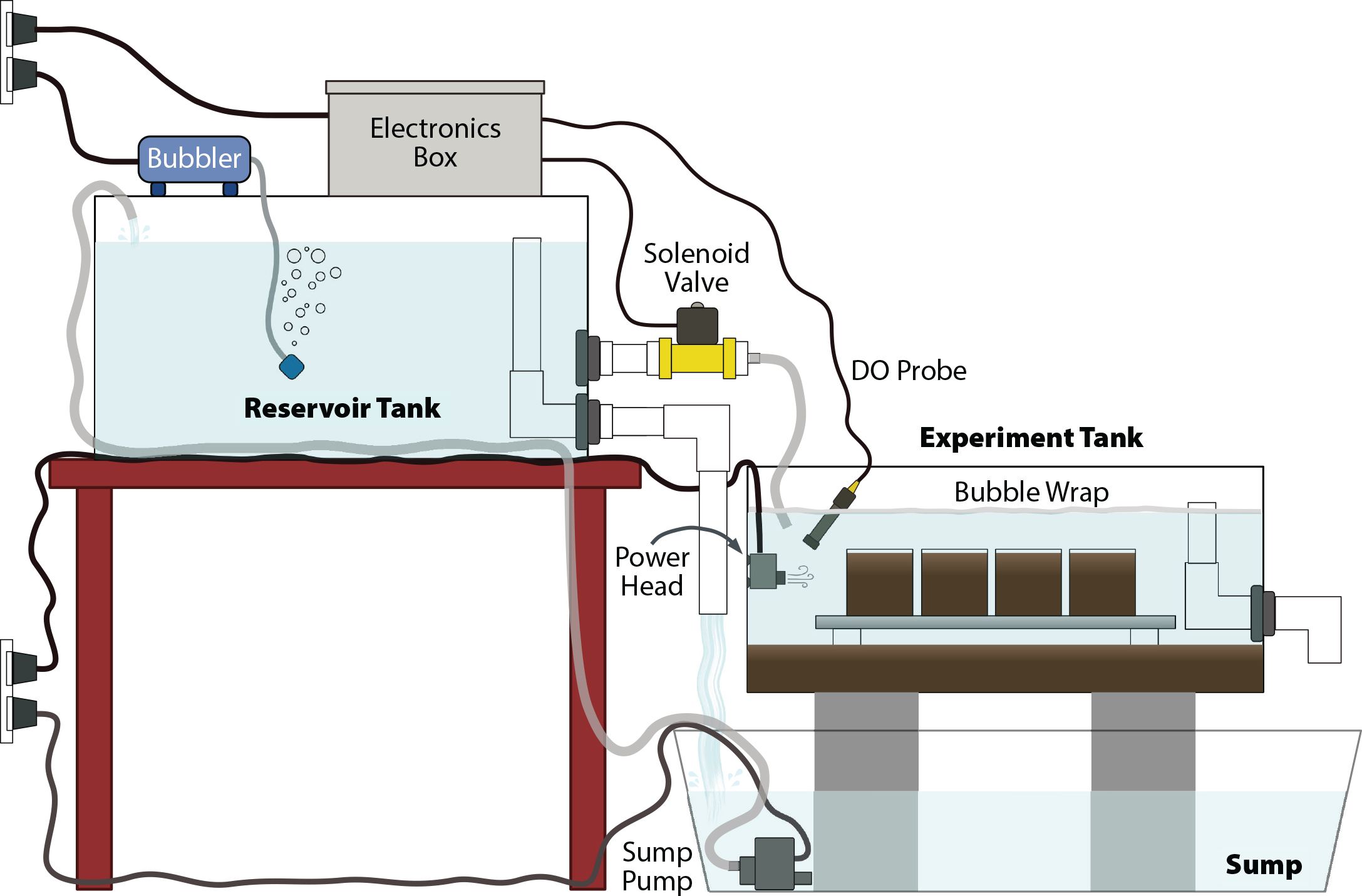steamroller
- 1,815
- 263
First off, I have never run any hydro system.
I think I understand the basics of RWDC.
All the systems and set ups I see have the reservoir/ sump running level with the buckets.
I assume this is because if the res was lower the buckets water level would be lower also?
So, when the whole system uses or lose water it is spread out throughout the whole system?
Roots become exposed and then covered again when the system is re filled.
Wouldn't this be problematic/detrimental or possibly beneficial?
I guess everyone just rolls with it?
I don't see one system that controls the amount of water or the water level of the bucket independent of the res. without using gate valves [ this IS problematic, and flow should always be controlled after the pump and not on the returns].
Has no one figured a solution to this yet?
The solution is simple and adds massive amounts of gas exchange.
My experience in aquaria says nothing beats surface extraction for gas exchange.
All you need is to install a pipe to the bulkhead and set it for level you desire water.
Bulkhead could be on bottom or on side using a 90.
Surface extraction encourages the most exchange.
This picture shows examples of simple overflows using side mounted bulkheads with 90s.

The picture is from; https://tos.org/oceanography/articl...-for-manipulating-dissolved-oxygen-in-the-lab
Just wondering what the hydro guys think of this?
I think I understand the basics of RWDC.
All the systems and set ups I see have the reservoir/ sump running level with the buckets.
I assume this is because if the res was lower the buckets water level would be lower also?
So, when the whole system uses or lose water it is spread out throughout the whole system?
Roots become exposed and then covered again when the system is re filled.
Wouldn't this be problematic/detrimental or possibly beneficial?
I guess everyone just rolls with it?
I don't see one system that controls the amount of water or the water level of the bucket independent of the res. without using gate valves [ this IS problematic, and flow should always be controlled after the pump and not on the returns].
Has no one figured a solution to this yet?
The solution is simple and adds massive amounts of gas exchange.
My experience in aquaria says nothing beats surface extraction for gas exchange.
All you need is to install a pipe to the bulkhead and set it for level you desire water.
Bulkhead could be on bottom or on side using a 90.
Surface extraction encourages the most exchange.
This picture shows examples of simple overflows using side mounted bulkheads with 90s.

The picture is from; https://tos.org/oceanography/articl...-for-manipulating-dissolved-oxygen-in-the-lab
Just wondering what the hydro guys think of this?





